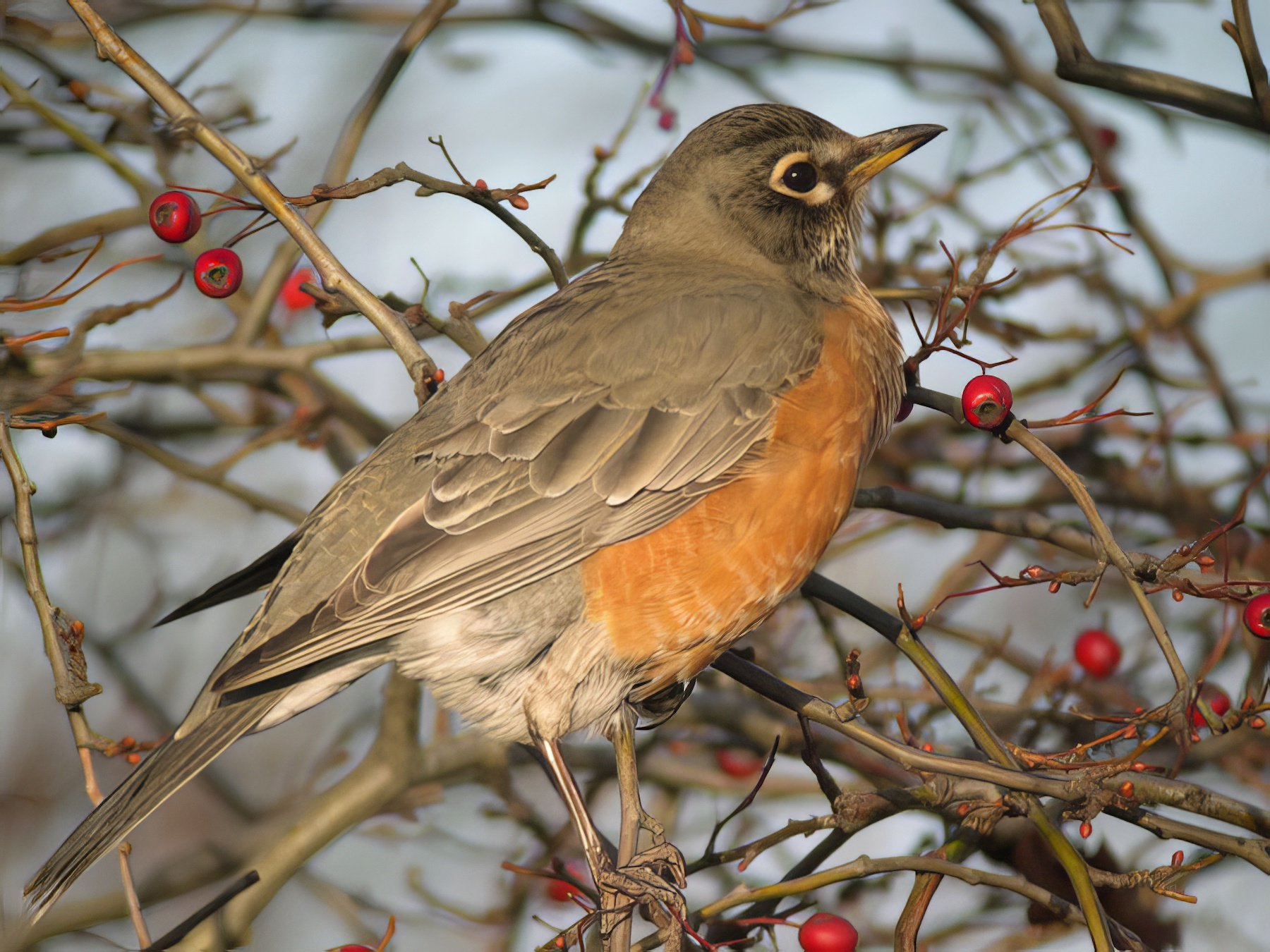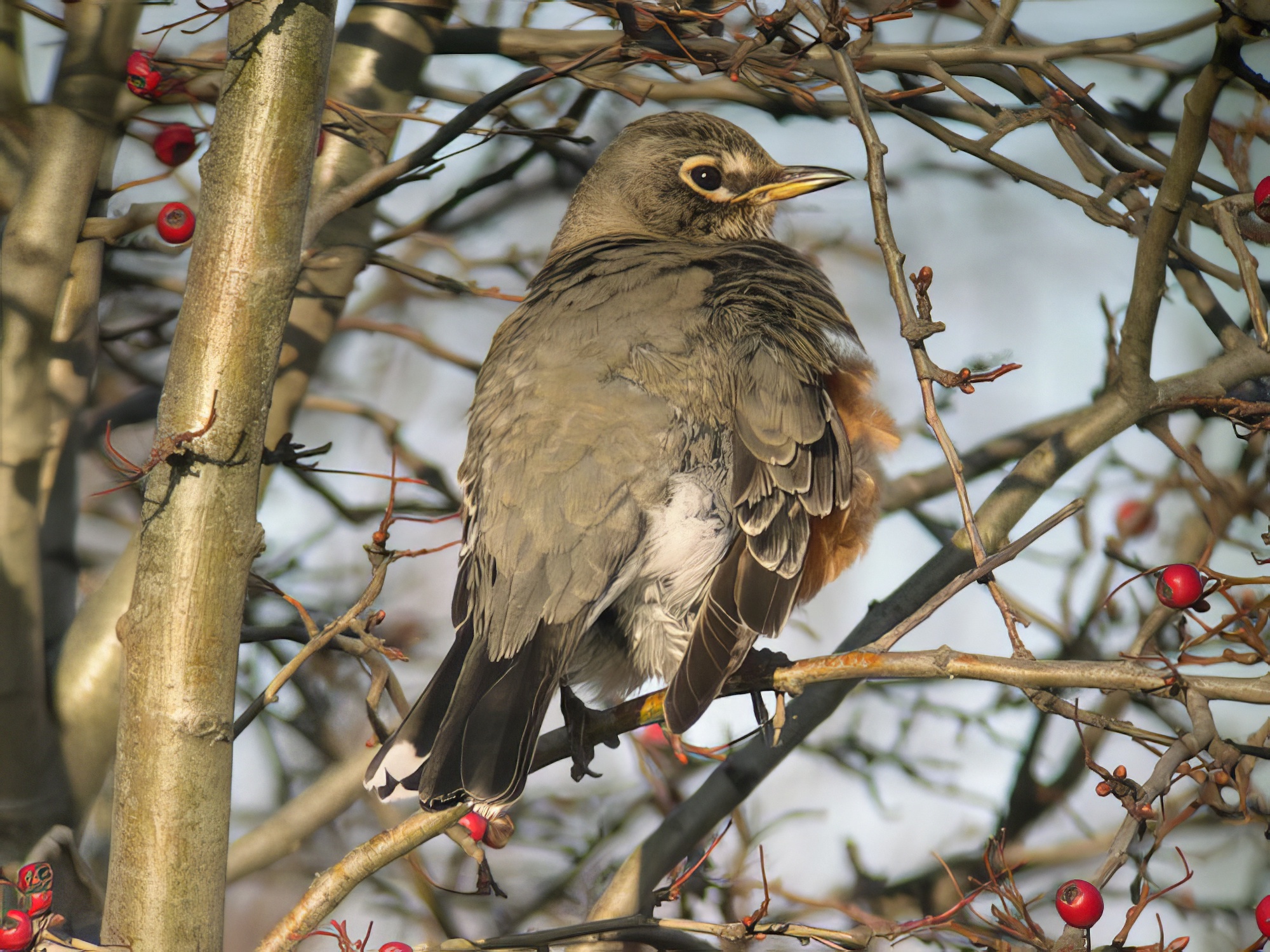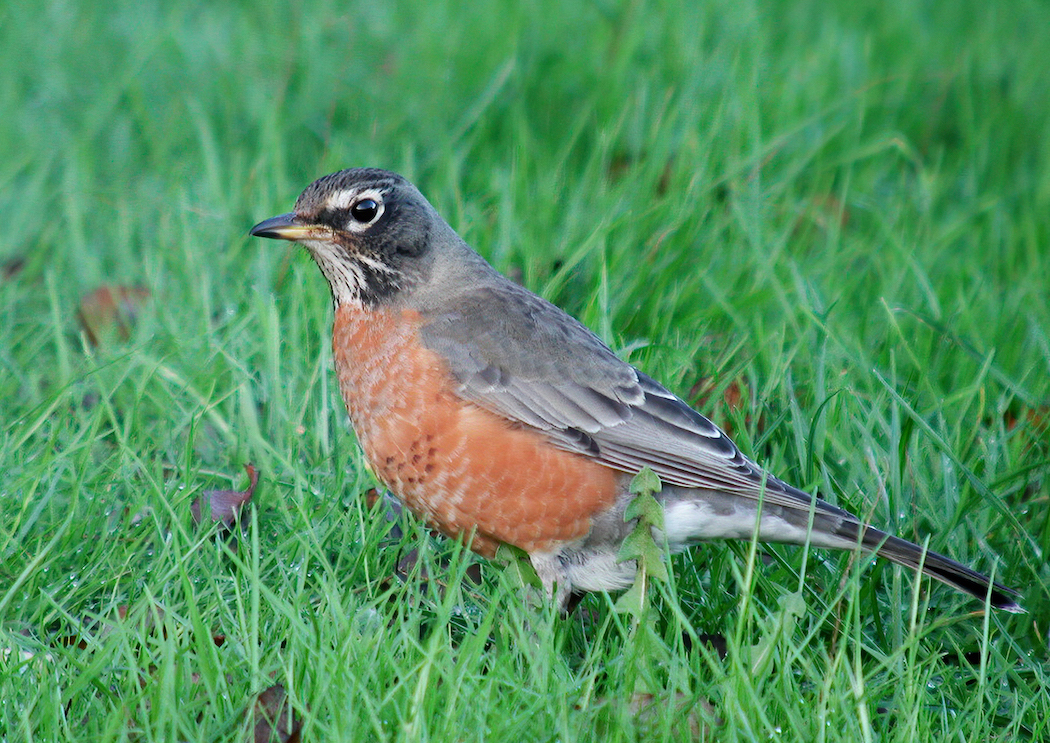American Robin Turdus migratorius
Vagrant. North America.



American Robin: at Pyewipe, Grimsby on 4th January 2004 (left/centre, Roy Harvey); right, Graham Catley.
Local birders looking for Waxwings Bombycilla garrulus on the Pyewipe industrial estate on the outskirts of Grimsby were astounded to stumble across this county first on January 1st, 2004. It became the focus of one of the biggest twitches in county history. It proved to be a 2CY female and frequented a small patch of scrub outside a busy industrial unit for nine weeks before succumbing to a Sparrowhawk Accipiter nisus on March 8th.
Two others were discovered in the late autumn and winter of 2003/4, one in Cornwall, one on Bardsey Island. Their appearance has been linked to a massive easterly displacement of this species and other late migrants from the North American Midwest to the eastern seaboard of the USA in the second week of November 2003. Although the arrival of American vagrants is a phenomenon usually associated with the western and south-western Britain, once here they can clearly disperse within Britain and may turn up anywhere. These three individuals took the British total to 21 since 1950; in total there have been 28 records up to 2019.
| Site | First date | Last date | Count | Notes |
| Pyewipe, Grimsby | 01/01/2004 | 08/03/2004 | 1 | 2CY female, taken by Sparrowhawk on March 8th |
Finder’s Report: American Robin at Pyewipe, Grimsby, January 1st to March 8th, 2004, first county record.
by Steve Smith and Terry Moore
Circumstances and description
On New Year's Day 2004, the weather cleared up in Lincolnshire, so we decided to go birding. We went to look for some Waxwings, which had been reported on the outskirts of Grimsby. We pulled into the car park of the Haven pub where they had been seen but there was no sign of them, so we drove around the far side of the adjacent roundabout to view the berry bushes on the industrial estate road opposite. We watched from the car window. There was no sign of the Waxwings but there on the grass verge, to our amazement, was a large thrush with an orange breast, we reversed the car up towards it and then stared at it in utter disbelief: there at point blank range was our first American Robin! It was feeding on fallen berries and as we watched it chased away Blackbirds from its food source. After a while it flew across the road into the estate. We followed the bird and watched it catch a worm, and then we left to pass the news on to Birdline. Fortunately, the bird stayed and continued to be very obliging , giving excellent views to the many people that ca me to see our find over the next few days and weeks.
Comment
Initially news of the presence of the American Robin was greeted with the same incredulity that Steve and Terry had experienced but as soon as the first birders followed up the news and connected with the bird then one of Lincolnshire 's biggest ever twitches ensued. Over the following two months there was seldom a day without a small crowd of enthusiasts staring into the small patch of bushes and adjacent grass verge much to the amusement of the local work force. The American Robin fed on the berries on the small bush it was first found under and also on hawthorn berries and on worms caught on the grass verges. People also started to bring apples for the robin which it also consumed as it became ever more approachable. It was identified as a firs t-winter female on the bas is of moult contrasts in the greater coverts and retained juvenile breast spotting on one side while the primaries were also juvenile feathers, but the tail feathers had been replaced and were adult like suggesting some trauma. After entertaining so many birders and the general public for so long it would have been nice for the American Robin to have left heading for summer pastures but as with so many vagrants it was a loss to the population and with so many people in daily attendance its demise was recorded. A short eulogy to the bird appears below.
Reference
Smith, S. and Moore, T. (undated). American Robin at Pyewipe, Grimsby, January 1st to March 8th 2004 Lincolnshire Rare & Scarce Bird Report 2003-2007, 153.
(Account prepared October 2017; includes records to 2016)

